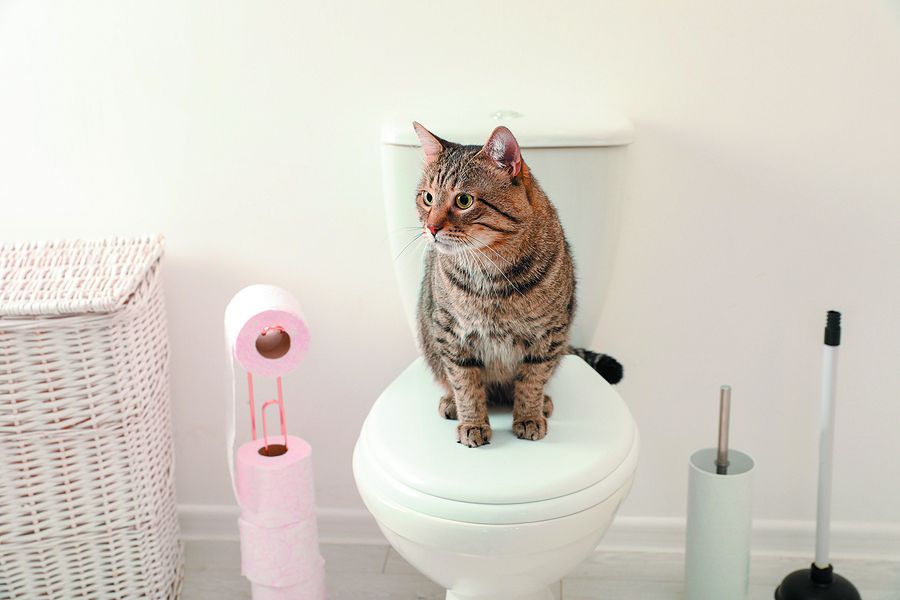Reasons Flushing Cat Poop Down Your Toilet Is Harmful - Tips for Correct Disposal
Reasons Flushing Cat Poop Down Your Toilet Is Harmful - Tips for Correct Disposal
Blog Article
What're your thoughts on How to Dispose of Cat Poop and Litter Without Plastic Bags?

Intro
As feline proprietors, it's vital to be mindful of how we take care of our feline buddies' waste. While it might seem practical to flush pet cat poop down the toilet, this practice can have destructive consequences for both the atmosphere and human health.
Alternatives to Flushing
Thankfully, there are much safer and extra accountable ways to deal with cat poop. Take into consideration the complying with alternatives:
1. Scoop and Dispose in Trash
The most common approach of disposing of feline poop is to scoop it into a biodegradable bag and throw it in the trash. Make sure to use a committed clutter scoop and throw away the waste quickly.
2. Use Biodegradable Litter
Select biodegradable feline litter made from materials such as corn or wheat. These litters are environmentally friendly and can be safely disposed of in the trash.
3. Hide in the Yard
If you have a yard, take into consideration burying cat waste in a designated location far from vegetable yards and water sources. Be sure to dig deep enough to prevent contamination of groundwater.
4. Set Up a Pet Waste Disposal System
Purchase a pet dog waste disposal system specifically designed for feline waste. These systems make use of enzymes to break down the waste, reducing smell and environmental impact.
Health and wellness Risks
Along with ecological problems, purging cat waste can likewise present wellness risks to humans. Cat feces may consist of Toxoplasma gondii, a parasite that can cause toxoplasmosis-- a potentially severe ailment, particularly for pregnant women and people with weakened body immune systems.
Environmental Impact
Flushing feline poop introduces dangerous pathogens and parasites right into the water, positioning a substantial threat to marine ecological communities. These impurities can adversely impact aquatic life and concession water high quality.
Conclusion
Responsible animal possession prolongs past supplying food and sanctuary-- it additionally entails proper waste monitoring. By avoiding flushing feline poop down the toilet and choosing alternative disposal approaches, we can minimize our environmental impact and safeguard human health.
CAN I FLUSH MY CAT'S POOP DOWN THE TOILET?
Always avoid flushing cat poop down the drain because not only could it potentially contain harmful parasites called toxoplasmosis, the litter could sit in your line and lead to a clog.
Plenty of waste gets flushed down your toilet every day, so what harm could a little cat poop and cat litter do? The answer is a lot, which is why you never want to send it down your drains.
Can I Flush My Cat's Poop Down The Toilet?One of the biggest problems with flushing your cat’s presents is the harmful parasites in your feline’s stool called toxoplasmosis. Extremely dangerous for humans, especially pregnant women and people who are immunocompromised, these parasites can cause a multitude of problems for unborn babies and even cause death or miscarriage if the infection happens early. That’s why you should always avoid touching cat poop. Also, water systems are not equipped to handle toxoplasmosis and are unable to destroy the parasite before it’s sent back into the environment, potentially jeopardizing the health of local area wildlife, specifically marine life.
Flushing cat poop could also lead to a future drain clog. Try as you may to eliminate any litter from it, there will always still be some stuck on there – and even if it says flushable on the label, it’s not! Cat litter is made up of bentonite clay, which has the tendency to harden when wet, creating a thick, almost cement-like quality. Cat litter that ends up down the drain can expand from the moisture in the pipes and then harden, blocking any wastewater. If you have a septic tank or a cesspool, it cannot handle cat litter either, no matter what kind. If it solidifies in the tank, in any of the system’s major parts like the inlet baffle, it’ll create some expensive problems.
The best way to dispose of cat poop safely is to scoop it into a bag and throw it into the trash – and ways of dealing with the smell include adding baking soda and replacing the box more.
Now that we’ve explained the potential harm that flushing cat poop can cause to you and your drains, you might be wondering the best way of dealing with it. Unfortunately, it’s the old-fashioned way of scooping it into a bag and then placing it into a trash can. They also make pet-proof trash cans that lock in the smell, so that you don’t have to always immediately take it out. If you’re tired of smelling the litter box after even just one use from your feline, there’s things you can do to help combat that smell. Adding baking soda to the litter will reduce smells, but just don’t add too much or your cat will no longer want to use the box. You could also replace the box more frequently, at least once a year, as those smells can just seep inside the scratch marks. Lastly, try changing to a new litter formula – some are better with smells than others.

I recently found that piece on Can You Flush Cat Poop Down The Toilet? while doing a lookup on the search engines. Are you aware of another individual who is sincerely interested in the subject? Do not hesitate to promote it. Kudos for your time. Don't hesitate to stop by our website back soon.
View More Report this page